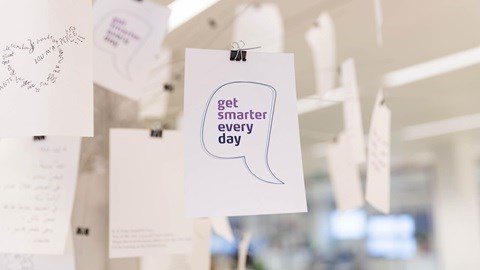Composable Digital Experience Platform explained

What is a Composable Digital Experience Platform?
Less than 10 years ago, having a website that included a phone number and a contact form was sufficient. We have now entered a phase where communication between company and customer also runs via mobile apps, chat, voice, Internet of Things and other emerging interfaces. Customers expect connected experiences through a range of digital channels, such as websites and social media, but also digital devices such as wearables and home appliances. How do you execute that properly? In this explainer about Composable Digital Experience Platform, we explain it to you.
An overarching digital experience
The solution? A Composable DXP (Digital Experience Platform). This makes a huge amount of content manageable. It is a platform that focuses on the customer experience. The strength of a Composable DXP is that it is one central platform from which all digital touchpoints of the customer journey can be served. Simply put, it allows you to create an overarching digital experience, regardless of the amount of touchpoints you create for the customer.
In practice, a Composable DXP is an integrated collection of technologies that brings together different capabilities such as e-commerce, content management, personalization and localization to ultimately deliver omnichannel digital experiences. An omnichannel strategy is about ensuring that the customer has exactly the same experience, throughout any channel. This means that all channels are fully aligned.
What we're seeing is that consumer expectations continue to rise, and as a result, brands are under increasing pressure to adapt. A personalized and easy customer experience is becoming more and more standard.
Rob Vogelsangs, Iquality
Pace and latitude
With a Composable DXP you experience speed and freedom in order to respond to new developments. This allows you to switch much faster, as you can easily replace or add software. You can choose any element yourself and these systems are built to undergo continuous evolution through new integrations.
Traditional content management systems attempt to deliver all of these capabilities from one monolithic piece of software. These traditional systems build websites or individual apps and are limited to hosting and managing content. They cannot send content to other digital channels. Although they are suitable for placing content on a web page, you cannot use them to create other digital experiences.
Are you ready to deliver the best digital experience to your customers? We are happy to tell you how a Digital Experience Stack can work for you.


